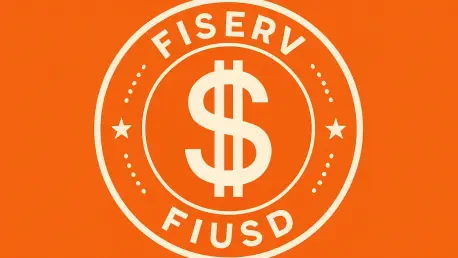As we dive into the evolving landscape of financial technology, I’m thrilled to sit down with Priya Jaiswal, a distinguished expert in Banking, Business, and Finance. With her deep knowledge of market analysis, portfolio management, and international business trends, Priya offers a unique perspective on the latest developments in the payments processing world. Today, we’re exploring Fiserv’s strategic acquisition of StoneCastle Cash Management and its implications for the financial ecosystem, particularly with the launch of the FIUSD stablecoin. Our conversation touches on how this deal enhances liquidity for banks, supports innovative stablecoin initiatives, and positions Fiserv as a game-changer in core banking.
What inspired Fiserv to pursue the acquisition of StoneCastle Cash Management, and how does this move align with their broader vision?
Fiserv’s acquisition of StoneCastle Cash Management is a strategic step to bolster their position as a leading provider of liquidity solutions for financial institutions. The motivation likely stems from a need to expand their capabilities in cash management and deposit optimization, areas where StoneCastle has built a strong reputation. This move aligns perfectly with Fiserv’s broader vision of becoming a technology-driven powerhouse in the financial sector, enabling them to offer end-to-end solutions that go beyond traditional payments processing. By integrating StoneCastle’s platform, Fiserv can tap into a vast network of community banks and credit unions, enhancing their ability to serve a wider range of clients with innovative tools.
How does StoneCastle’s technology specifically enhance Fiserv’s ability to become a major source of institutional deposits?
StoneCastle’s platform is designed to optimize deposits by connecting individuals, businesses, and government entities with over a thousand community banks and credit unions. Their technology ensures that these deposits are stable and cost-efficient, which is a huge draw for financial institutions looking to strengthen their funding base. For Fiserv, this means they can now channel billions in institutional deposits through a tech-enabled system, providing banks with a reliable source of liquidity. This capability not only boosts balance sheets but also integrates seamlessly with Fiserv’s existing offerings like digital banking and core account processing.
Can you elaborate on how this acquisition supports Fiserv’s ambitions with the FIUSD stablecoin?
The FIUSD stablecoin is a significant initiative for Fiserv, and StoneCastle’s platform plays a pivotal role in making it viable for banks. Essentially, StoneCastle’s technology allows financial institutions to retain funds tied to FIUSD issuance on their own balance sheets. This is a game-changer because it addresses a key concern for banks—maintaining control over their capital while participating in stablecoin issuance. By leveraging StoneCastle’s deposit network, Fiserv ensures that banks can custody cash backing the stablecoin, making FIUSD a more attractive and capital-friendly option for their network of over 10,000 financial institutions.
Fiserv has talked about becoming a technology-enabled source of billions in deposits. What does this mean for the broader financial ecosystem?
This positioning is transformative for the financial ecosystem because it redefines how liquidity is managed and accessed. Fiserv isn’t just acting as a middleman; they’re using advanced technology to create a robust pipeline of institutional deposits that can stabilize and grow the balance sheets of banks and credit unions. This sets them apart from traditional core banking players by offering a unique blend of deposit solutions and innovative products like FIUSD. The ripple effect is significant—it unlocks new value for financial institutions by giving them tools to innovate, attract depositors, and compete in a rapidly digitizing market.
What can you tell us about the timeline and process for integrating StoneCastle into Fiserv’s operations?
The deal is slated to close by the first quarter of 2026, which gives Fiserv a clear window to plan the integration. Post-closure, the focus will likely be on aligning StoneCastle’s platform with Fiserv’s existing ecosystem, ensuring that their deposit solutions work seamlessly with digital banking and payments systems. This process will involve technical integration, staff training, and possibly expanding StoneCastle’s reach within Fiserv’s network of clients. While full integration might take some time, I expect to see initial synergies and offerings rolling out within a year after the deal closes, given Fiserv’s track record of efficient acquisitions.
With Fiserv aiming to issue the FIUSD stablecoin by the end of this year, what challenges might they face in meeting that target, and how does StoneCastle help?
Launching a stablecoin like FIUSD by year-end is ambitious, and there are several hurdles to consider. Regulatory compliance is a big one—stablecoins are under intense scrutiny, and ensuring everything meets legal standards can slow things down. Additionally, onboarding financial institutions and building trust in the stablecoin’s stability and utility will take effort. StoneCastle’s acquisition helps accelerate this by providing a ready-made deposit network that supports the custody of funds backing FIUSD. Their platform reduces the friction for banks to participate, which could speed up adoption and help Fiserv meet their timeline.
Looking ahead, what is your forecast for the impact of stablecoins like FIUSD on the financial industry?
I believe stablecoins like FIUSD have the potential to revolutionize the financial industry by bridging traditional banking with digital finance. They offer a way to facilitate faster, cheaper transactions while maintaining the stability of fiat currency, which is incredibly appealing for both consumers and institutions. With Fiserv’s vast network and StoneCastle’s deposit capabilities, FIUSD could set a new standard for how banks engage with digital assets. My forecast is that we’ll see stablecoins becoming a core part of financial ecosystems within the next five years, driving innovation in payments, lending, and even cross-border transactions, provided regulatory frameworks evolve to support their growth.









